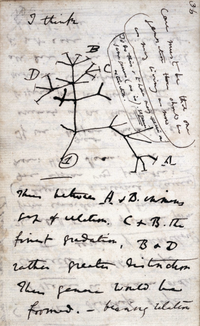
Photo from wikipedia
Green plants (Viridiplantae) are ancient photosynthetic organisms that thrive both in aquatic and terrestrial ecosystems, greatly contributing to the changes of global climates and ecosystems. Significant progress has been made… Click to show full abstract
Green plants (Viridiplantae) are ancient photosynthetic organisms that thrive both in aquatic and terrestrial ecosystems, greatly contributing to the changes of global climates and ecosystems. Significant progress has been made towards understanding the origin and evolution of green plants, and plant biologists have arrived at the consensus that green plants first originated in marine deep-water environments and later colonized fresh water and dry land. The origin of green plants, colonization of land by plants and rapid radiation of angiosperms are three key evolutionary events during the long history of green plants. However, the comprehensive understanding of evolutionary features and molecular innovations that enabled green plants to adapt to the complex and changeable environments are still limited. Here, we review current knowledge of phylogenetic relationships and divergence times of green plants, and discuss key morphological innovations and distinct drivers in the evolution of green plants. Ultimately, we highlight fundamental questions to advance our understanding of the phenotypic novelty, environmental adaptation, and domestication of green plants. This article is protected by copyright. All rights reserved.
Journal Title: Journal of integrative plant biology
Year Published: 2022
Link to full text (if available)
Share on Social Media: Sign Up to like & get
recommendations!